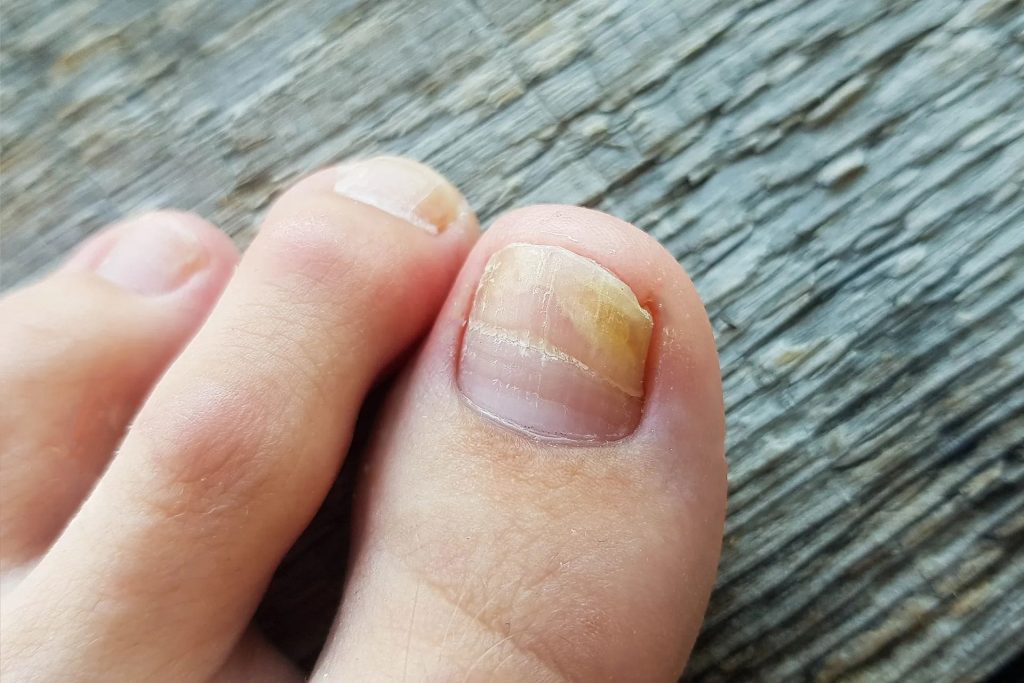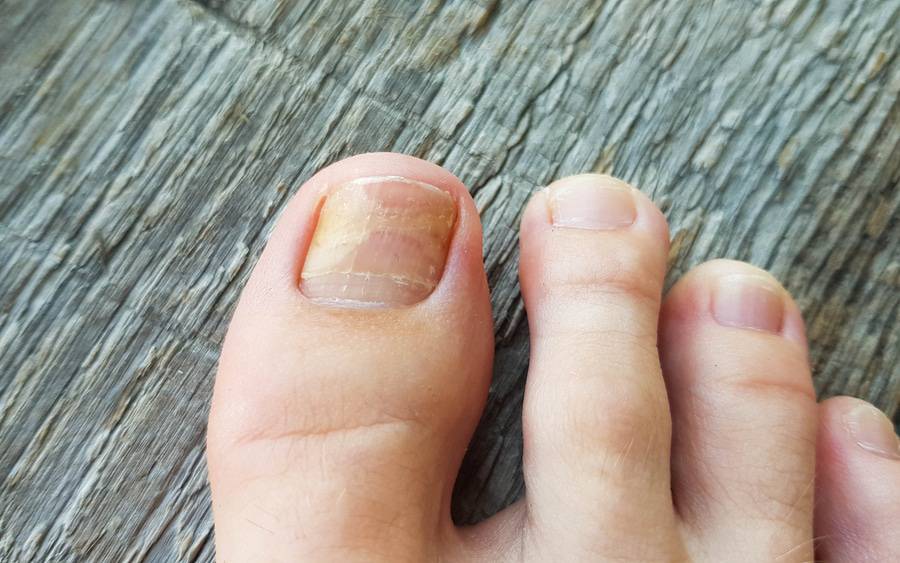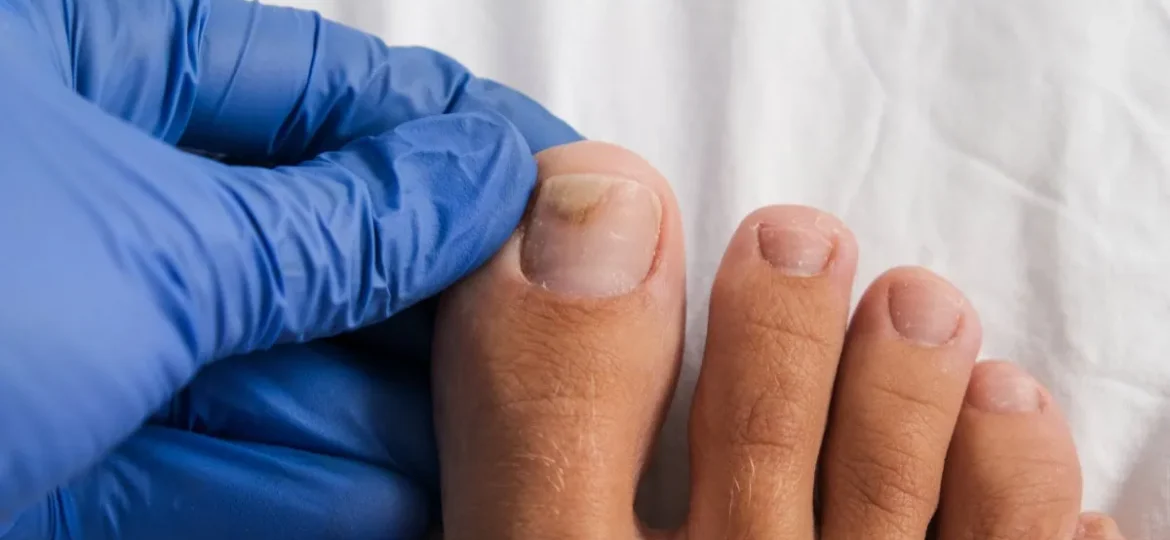
Nail fungus, medically referred to as onychomycosis, is a common and persistent condition affecting millions of people worldwide. It often begins as a white or yellow spot under the tip of the fingernail or toenail and, as the fungal infection progresses, it can cause nails to become discolored, thickened, brittle, and sometimes even painful. While prescription treatments are available, many individuals prefer to explore natural remedies as a first line of defense—especially for mild to moderate cases.
This article introduces a simple yet effective natural remedy for nail fungus, backed by antifungal properties found in baking soda, vinegar, and tea tree oil. These ingredients are widely accessible, affordable, and gentle on the skin, making them an excellent choice for daily use.
What Is Nail Fungus?
Nail fungus is caused by the overgrowth of fungi in, under, or on the nail. It typically affects toenails more than fingernails due to the warm, moist environment often found in shoes, which promotes fungal growth. The most common types of fungi involved are dermatophytes, but yeasts and molds can also be culprits [1].
Symptoms of nail fungus include:
- Thickened or distorted nails
- Yellow, brown, or white discoloration
- Crumbling edges
- Foul odor
- Pain in severe cases
According to the Centers for Disease Control and Prevention (CDC), nail fungal infections are more common in older adults, individuals with compromised immune systems, and people with diabetes or poor circulation [2].

Why Use Natural Remedies?
While antifungal medications such as terbinafine or itraconazole are often prescribed for nail fungus, these treatments may take months and can sometimes cause side effects. Over-the-counter creams also have limited effectiveness for deeper infections because they may not penetrate the nail bed.
Natural remedies, when used consistently, can be beneficial for surface-level or mild infections. The following combination of baking soda, vinegar, and tea tree oil is one of the most commonly recommended home remedies due to each ingredient’s antifungal and cleansing properties.

Natural Nail Fungus Remedy: Ingredients and How They Work
1. Baking Soda (Sodium Bicarbonate)
Baking soda is a naturally alkaline substance that helps create an environment that is inhospitable for fungus. Fungi thrive in acidic environments, and by neutralizing the pH of the skin and nails, baking soda helps stop the spread of infection. Studies have shown that baking soda exhibits antifungal activity against Candida albicans, a common fungus responsible for skin and nail infections [3].
2. Vinegar (Apple Cider or White Vinegar)
Vinegar is acidic (pH around 2–3), which helps fight fungi by disrupting their cell structure. A study published in Mycopathologia noted that acetic acid (the primary component of vinegar) exhibits antimicrobial effects against a range of bacteria and fungi [4]. Apple cider vinegar is often preferred for its added benefits such as containing enzymes and beneficial bacteria, but white vinegar works equally well in this remedy.

3. Tea Tree Oil (Melaleuca alternifolia)
Tea tree oil is a well-known essential oil with powerful antifungal, antibacterial, and anti-inflammatory properties. A 2013 review published in the International Journal of Dermatology highlighted its effectiveness against fungal infections, including onychomycosis [5]. It is often used in skin and nail care products for its ability to treat conditions like athlete’s foot, acne, and nail fungus.
How to Make and Use the Natural Nail Fungus Remedy
Ingredients:
- 2 tablespoons of baking soda
- 1 tablespoon of vinegar (apple cider or white)
- 10 drops of 100% pure tea tree essential oil
Instructions:
- Mix the remedy: In a clean bowl, combine the baking soda and vinegar. The mixture will fizz initially. Stir in the tea tree oil and blend well.
- Prepare your nails: Soak the affected nails in warm water for 10 minutes to soften them. Pat dry thoroughly with a clean towel.
- Apply the remedy: Use a cotton swab, clean brush, or Q-tip to apply the solution directly onto the affected nails, covering the entire surface and surrounding skin.
- Let it sit: Allow the remedy to stay on the nails for 20–30 minutes. Afterward, rinse with warm water and dry thoroughly.
- Repeat: For best results, apply this remedy twice daily—once in the morning and once before bed—until the infection clears. This may take several weeks depending on the severity.
Important: Use fresh solution daily. Ensure the tools and towels used are sanitized to prevent recontamination.

When to See a Doctor
While natural remedies are helpful for mild to moderate cases, there are situations where professional medical advice is necessary. You should consult a healthcare provider if:
- The infection shows no improvement after several weeks
- The nail becomes painful, swollen, or starts to ooze
- You have diabetes, circulatory problems, or a weakened immune system
- Multiple nails are affected or severely thickened
Early diagnosis and treatment are important to prevent the fungus from spreading to other nails or parts of the body.
:max_bytes(150000):strip_icc()/VWH-GettyImages-1342960587-4c280fa43fd744e28826774785d70a8f.jpg)
Additional Tips for Preventing Nail Fungus
- Keep nails dry and clean: Fungus thrives in moist environments.
- Wear breathable footwear: Choose shoes made of natural materials and avoid sharing footwear.
- Trim nails regularly: Keep nails short and filed to prevent fungus from spreading.
- Change socks daily: Especially if you sweat excessively.
- Use antifungal foot powders: Particularly if you frequent gyms or swimming pools.
Conclusion
Fungal nail infections are not only common but also frustrating to treat. However, with a consistent routine using natural remedies such as baking soda, vinegar, and tea tree oil, many people have found relief from symptoms and restored their nail health.
While this remedy is not a guaranteed cure for every case, it is a gentle, cost-effective, and widely accessible option that can support overall nail hygiene and wellness. As always, when in doubt or if symptoms worsen, consult a qualified healthcare provider for guidance.
Sources:
- Mayo Clinic. “Nail Fungus (Onychomycosis) – Symptoms and Causes.”
https://www.mayoclinic.org - CDC. “Fungal Nail Infections.”
https://www.cdc.gov/fungal/diseases/nail-infections.html - Mondal, D. et al. “Antifungal activity of sodium bicarbonate against Candida albicans.” Journal of Mycology. 2015.
https://www.hindawi.com/journals/jmy/2015/ - Rutala, W. A., et al. “Antimicrobial activity of acetic acid against bacteria and fungi.” Mycopathologia, 2000.
https://link.springer.com/article/10.1023/A:1007122217517 - Hammer, K. A., et al. “A review of the antimicrobial activity of tea tree oil.” International Journal of Dermatology.
https://onlinelibrary.wiley.com/journal/13654632


